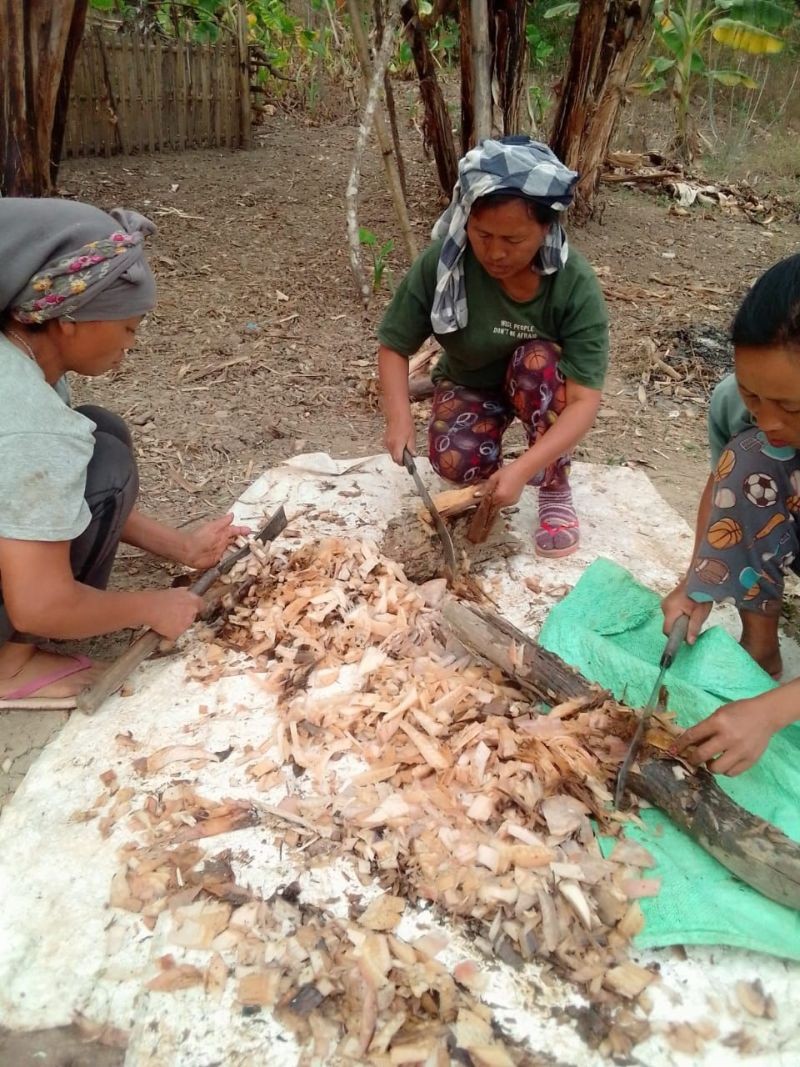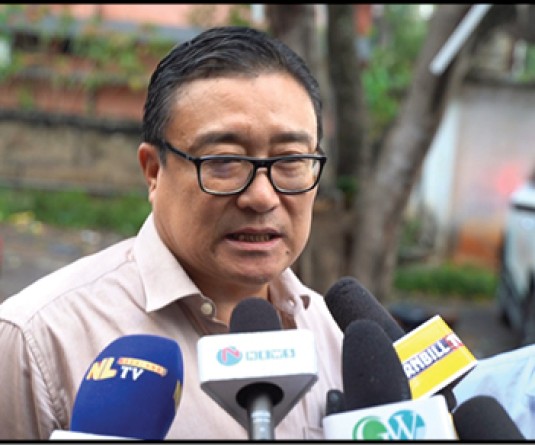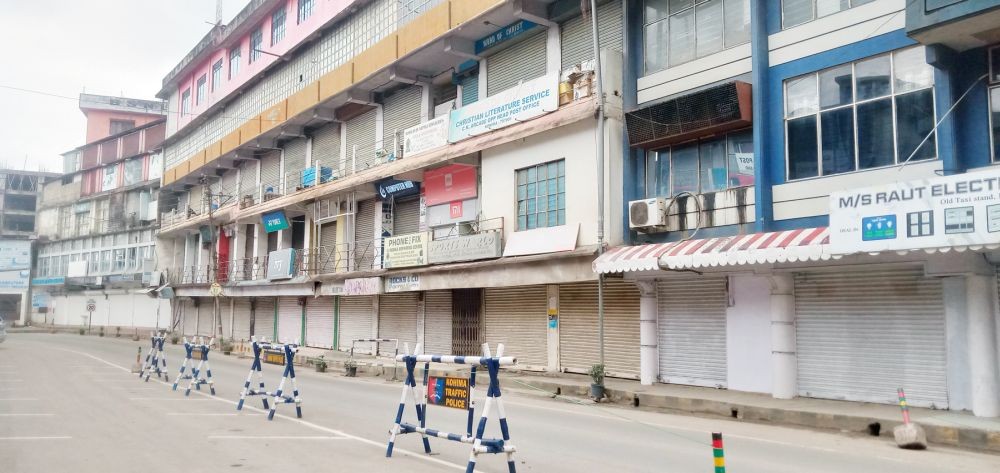SHG members prepare kitchen waste to be used in the compost pit of the group’s kitchen garden. (Morung Photo)

Women groups in Longmatra take steps towards self reliance
Veroli Zhimo
Longmatra | April 23
It is late April and the women of Longmatra village prepare to move their saplings from their kitchen gardens to the jhum fields located about three kilometres away from the village. The 80-odd women—all members of Self-Help Groups (SHGs), eagerly await the rain to begin the planting season.
Self-Help Groups (SHGs) are self-governed and peer-controlled networks that are mostly maintained by women; all in the service of achieving self-reliance. Although they have their share of challenges, in this small village of Longmatra in Kiphire district, SHGs are emerging as a powerful conduit for incubating and empowering women to move from subsistence to sustainability.
It began in the early part of 2019 when the women of Longmatra registered 9 SHGs that would be overseen by a Village Level Organisation (VLO) with the initiation of the Nagaland State Rural Livelihood Mission (NSRLM). The NSRLM and other governmental agencies provided various training programmes that ranged from tailoring, banana chips making, oyster mushroom cultivation, baking, and banana fibre processing, among others.
During an interaction with The Morung Express, the women attested that the SHG membership enabled them to hone their rudimentary skills through the trainings. They also gained access to financial services that helped members develop their enterprises.
For Nothsi who joined Lisuh SHG in 2019, her membership has not only been about training and managing finances.
“This SHG has helped me realise that I have the potential to create a better life not just for myself but my entire community,” she shared. “We talk about our personal problems as well as problems faced by the village as we work and come up with solutions to some of them.”
Nothsi shared that she was able to use her interest in tailoring to help the village especially during the COVID-19 induced lockdown in 2020. She took a loan from the SHG to procure a sewing machine and began stitching facemasks.
Initially, the masks were sold in the village itself but soon, orders began to come from neighbouring villages, she added.
By the end of the year, Nothsi had set up the only tailoring unit in the village as people began to seek her out to mend clothes or to order more facemasks. Other SHG members present at the interaction shared that Nothsi’s home-based tailoring unit has been a ‘blessing.’
Earlier, villagers had to spend Rs 350 and travel almost 35 kilometres to Kiphire town just to fix a torn hem, they said. “Now, all we have to do is go to her house and she will fix it,” one of the women stated.
But it is not just in tailoring that the SHGs have been able to create self-sufficiency at the village level. Amid the COVID-19 crisis, the women have made significant progress in ensuring food security for their community.
Shenshethsi, a village-level functionary and member of Alatso SHG, shared that the concept of kitchen gardens has enabled the women to continue agricultural activities beyond the traditional jhum cycle.
With the introduction of kitchen gardens, the women have been growing cabbages, beans, chillies, tomatoes and other vegetables throughout the year. This ensures a steady supply of vegetables in the village even during the dry seasons.
Along with this, they also grow saplings that will be transplanted in the jhum fields, while some are sold at the daily bazaar in Kiphire town. “Some of the groups are also considering rearing chickens and other livestock on a larger scale, so that we can start supplying meat and eggs to Kiphire town,” she added.
Despite these notable strides in self-sufficiency, the women are wary about getting their hopes high. The wariness mostly stems from the fact that most of the SHG members have very little formal education and exposure to the world around them. “We still have a long way to go in order to be considered a ‘success story,’” said Nothsi who is also the VLO Secretary.
More efforts are being put in to encourage young female school dropouts in the SHG fold and even the men participate in some of the VLO meetings and contribute ideas on how we can take their work forward, Shenshethsi added.
The Village Council Chairperson and Village Development Board Secretary who were both present during the interaction shared that the women have been quick to assess the needs of the community and respond effectively by drawing on local relationships. The VCC also shared that the SHGs were instrumental in creating COVID-19 awareness in the village and the neighbouring Longmatra town, even managing quarantine centres and collaborating with the village authorities to ensure SOP compliance.
In the development sector across the country, the focus on efforts to empower women and revitalise rural livelihoods has been growing. For Nagaland, the story of the Longmatra women is one example of how government interventions can revitalise rural livelihoods and ease the transition from subsistence to sustainability.




